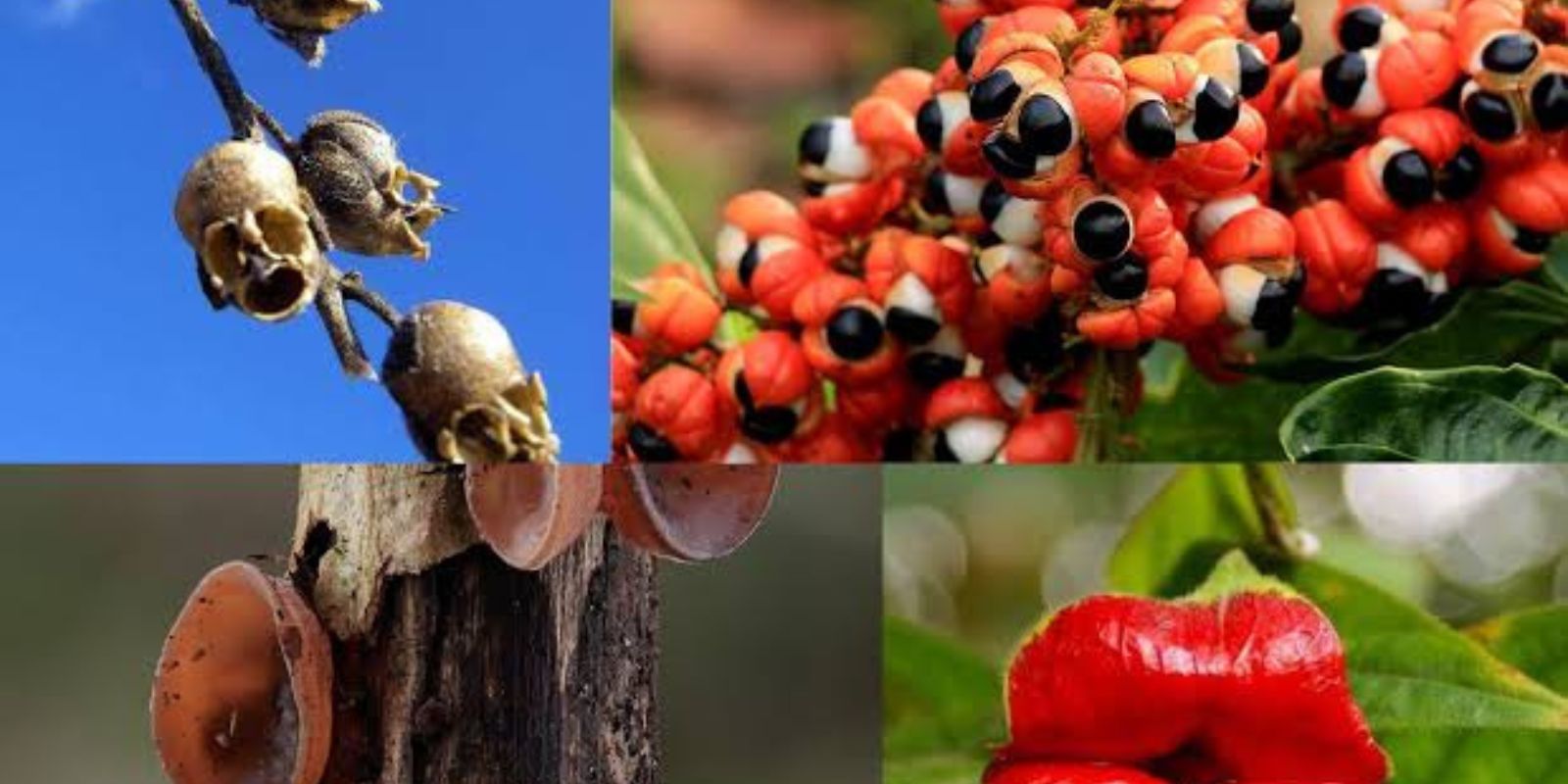Nature never ceases to amaze us. From the grandeur of towering trees to the tiniest, most intricate flowers, the plant kingdom is a treasure trove of beauty and mystery. But among its wonders are plants that defy imagination—they mimic human body parts so closely that they almost seem otherworldly. These unique specimens highlight the creativity of evolution and our deep connection to the natural world. Let’s delve into the intriguing realm of six plants that mirror human anatomy in astonishing ways.
1. Auricularia Auricula: Mushrooms That Resemble Human Ears
Also known as “wood ear” or “jelly ear,” Auricularia auricula is a type of fungus commonly found growing on decaying wood in damp environments. What makes this fungus extraordinary is its uncanny resemblance to the human ear.
- Appearance: When hydrated, its gelatinous texture and curved form mirror the shape and feel of a human ear. When dried, it hardens, resembling cartilage or bone.
- Use: Beyond its visual intrigue, this mushroom is edible and prized in traditional Chinese medicine for its supposed health benefits, such as improving blood circulation.
- Fun Fact: The ear-like structure isn’t just for show—it increases the surface area of the fungus, helping it absorb nutrients efficiently.
2. Guaraná: The Eyeball Vine
Native to the Amazon rainforest, the guaraná plant (Paullinia cupana) produces fruit that looks shockingly similar to human eyeballs when ripe.
- Appearance: The fruit’s outer shell splits open, revealing a white pulp surrounding a black seed, creating the striking illusion of an eye.
- Use: Guaraná seeds are widely used in energy drinks and supplements for their high caffeine content.
- Cultural Significance: Indigenous Amazonian tribes consider the plant sacred and associate its eye-like appearance with mythical tales of protection and vision.
3. Devil’s Finger Fungus: The Hand of Horror
The devil’s finger fungus (Clathrus archeri), also known as “octopus stinkhorn,” is one of nature’s most bizarre creations. Its resemblance to a grotesque, fiery-red hand makes it a plant straight out of a horror movie.
- Appearance: When mature, the fungus develops elongated red “fingers” tipped with black spore sacs. The fingers spread out from a central base, mimicking a skeletal hand.
- Smell: Unfortunately, its appearance comes with a downside—a strong, putrid odor that attracts flies for spore dispersal.
- Symbolism: Often associated with decay and the macabre, it’s a perfect example of nature’s darker, mysterious side.
4. Psychotria Elata: The Kissing Plant
If you’ve ever wanted a kiss from nature, the Psychotria elata plant has you covered. Native to Central and South America, this tropical beauty is famous for its bright red bracts that resemble luscious lips.
- Appearance: The plant’s “lips” are actually modified leaves that protect its small, inconspicuous flowers. These bracts form a striking resemblance to a pair of red lips mid-pucker.
- Purpose: The lip-shaped bracts attract pollinators like hummingbirds and butterflies, ensuring the plant’s reproduction.
- Threats: Sadly, deforestation and habitat loss threaten this unique plant’s existence.
5. False Morels: Brain-like Blooms
With their wrinkled, convoluted surfaces, false morels (Gyromitra spp.) are fungi that closely resemble the human brain. While they are visually captivating, they come with a warning.
- Appearance: The irregular folds and grooves of their caps mimic the structure of the cerebral cortex.
- Caution: Unlike true morels, false morels can be toxic if not prepared correctly, containing compounds that may cause severe health issues.
- Ecosystem Role: Despite their toxicity, they play a crucial role in forest ecosystems by breaking down organic matter.
6. Snapdragon Seed Pods: Tiny Skulls of the Plant World
When snapdragon flowers (Antirrhinum majus) fade, their seed pods leave behind a haunting resemblance to miniature skulls.
- Appearance: The dried pods have hollowed-out “eye sockets” and a jaw-like structure, evoking the image of tiny human skulls.
- Symbolism: In folklore, the snapdragon was believed to ward off evil spirits, and its skull-like pods only add to its mystical reputation.
- Fun Fact: The snapdragon’s name comes from the way its flowers resemble a dragon’s mouth, opening and closing when squeezed.
Nature’s Playful Imitations: What Do They Mean?
The resemblance of these plants to human body parts is not just a quirky coincidence. It demonstrates nature’s creativity and adaptability in evolving shapes and forms that serve specific purposes. Whether it’s attracting pollinators, deterring predators, or maximizing nutrient absorption, these plants have mastered the art of survival while keeping us intrigued.
Why Are These Plants Important?
- Biodiversity Awareness: These plants remind us of the incredible diversity within the natural world and the importance of conserving their habitats.
- Cultural Significance: Many of these plants hold symbolic value in folklore and tradition, enriching our cultural heritage.
- Scientific Inspiration: Their unique shapes inspire scientists and designers, from biomimicry in technology to medical research.
How to Grow These Plants in Your Garden
If you’re intrigued by these fascinating plants and want to include them in your garden, here are some general tips:
- Research Their Needs: Each plant has specific requirements for sunlight, water, and soil type.
- Provide Adequate Space: Unusual plants often grow in unique ways, so ensure they have enough room to thrive.
- Start with a Hobby: Begin with easier options like snapdragons or wood ear mushrooms before advancing to more challenging species.
Final Thoughts: Nature’s Endless Wonders
Plants that resemble human body parts offer more than just visual appeal—they spark curiosity, ignite imagination, and deepen our appreciation for the intricate wonders of nature. From ear-like mushrooms to skull-like seed pods, these botanical marvels remind us of the delicate balance and boundless creativity within our natural world.
Which of these plants fascinates you the most? Share your thoughts and experiences in the comments below!
#NatureWonders #FascinatingPlants #BotanicalCuriosities #GardeningFun #PlantLovers #Biodiversity

